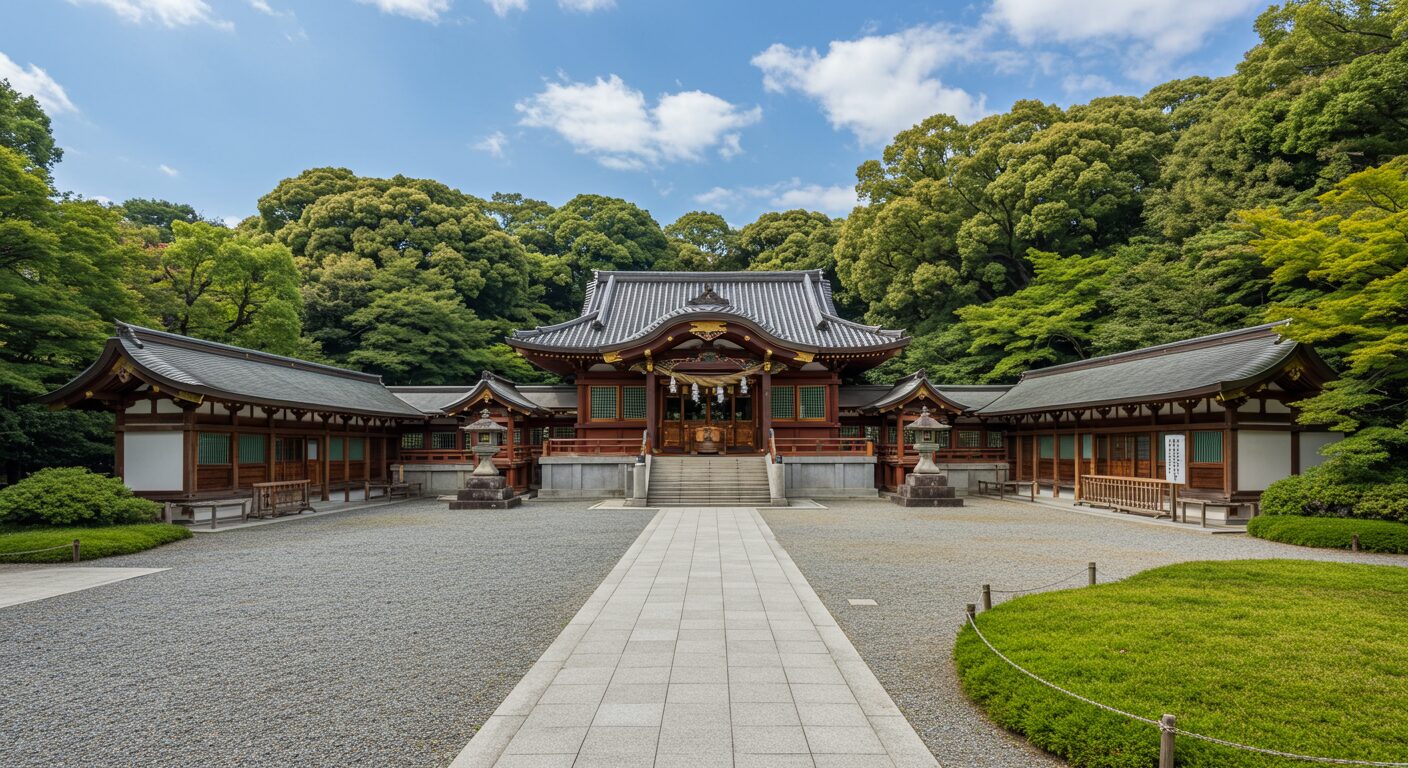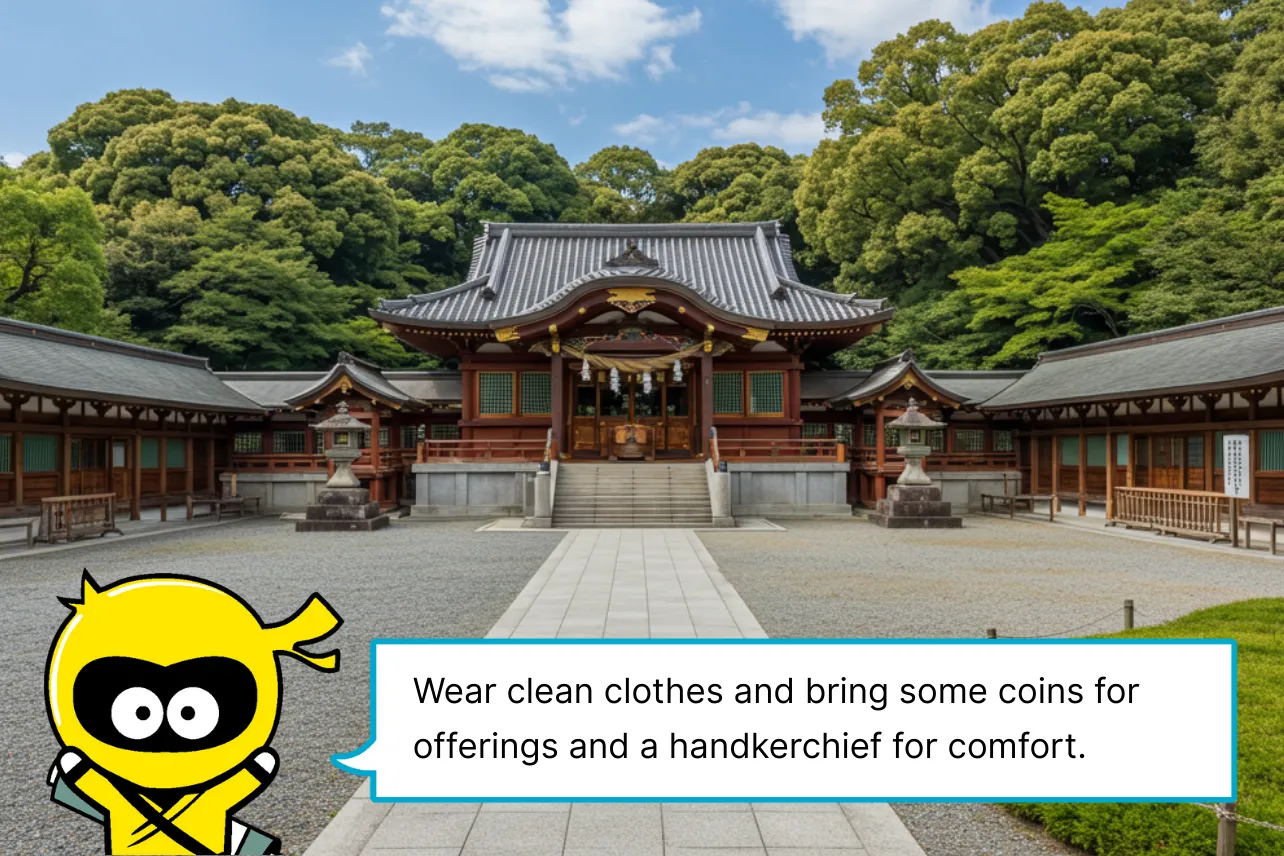

What Is “Two Bows, Two Claps, One Bow”? Meaning and History Explained Simply


“Two Bows, Two Claps, One Bow” is the formal ritual when visiting a Shinto shrine. You bow deeply twice, clap your hands twice, and finish with one final deep bow. Each movement shows respect and gratitude toward the deities. Since ancient times, Japanese people have expressed sincerity through sound and gesture, and this practice is part of that tradition. For foreign visitors, it’s a valuable opportunity to experience authentic Japanese spirituality. Learning the proper steps helps you appreciate Japanese culture on a deeper level.
Differences Between Shrines and Temples: Key Etiquette Points
Japan has two main types of sacred sites: Shinto shrines and Buddhist temples. Shrines follow Shinto traditions, while temples are rooted in Buddhism, and their etiquette differs. At shrines, the ritual of Two Bows, Two Claps, One Bow is standard, but at temples, the proper way is to press your palms together and bow quietly. Entrances differ too: shrines have torii gates, temples have large temple gates. Even how offerings are made can vary. Mixing up the two may be seen as disrespectful, so it’s best to know the difference before you visit.
No Need for “Two Bows, Two Claps, One Bow” at Temples
The Two Bows, Two Claps, One Bow ritual is unique to shrines and is not practiced at temples. Temples are Buddhist sites, where the standard gesture is to press your palms together in prayer (gasshō) and bow silently. This is a way to honor the Buddha and ancestors, and clapping is not part of the custom. Some foreign visitors confuse shrines and temples and try the same ritual at both, but clapping at a temple can seem out of place. Learning the background helps you follow the right manners and show respect for Japanese traditions.
Preparation and Mindset Before Visiting【Clothing & Essentials】


When visiting a shrine or temple, dress neatly and respectfully. Avoid revealing outfits or overly casual clothes. Handy items to bring include coins for offerings, a goshuin stamp book, and a handkerchief. Remember, visiting is not just sightseeing but an act of respect. Inside the grounds, avoid talking loudly or using your phone constantly. Keeping a calm, considerate attitude helps you fully appreciate the atmosphere of these sacred places.
How to Use the Purification Fountain (Temizuya)
Before praying at a shrine, purify your hands and mouth at the temizuya (water pavilion). Scoop water with the ladle, wash your left hand, then your right. Pour water into your left hand to rinse your mouth (don’t drink directly from the ladle). Wash your left hand again, then rinse the ladle’s handle before putting it back. This ritual purifies both body and spirit before approaching the deity. It may seem tricky at first, but once you learn the steps, it becomes an authentic part of the shrine experience.
Proper Position and Posture at the Worship Hall
At the worship hall, avoid standing directly in the center, which is believed to be the sacred path for the deity. Stand slightly to the side. Place your offering quietly, straighten your posture, and begin your prayer. Remove hats and sunglasses, keep your back straight, and move slowly and with care. Photos should be taken only when they don’t disturb others. These small details are an important part of showing respect at shrines and temples in Japan.
The Correct Steps for “Two Bows, Two Claps, One Bow”
The ritual goes as follows: bow deeply twice, clap your hands twice at chest level, and end with one final deep bow. When clapping, pull your right hand slightly back so the sound resonates. Focus on your wish or gratitude while performing the ritual. By following the correct sequence, you show the Shinto spirit of reverence and thankfulness. It may look simple, but it carries deep cultural meaning. Learning the process beforehand ensures a more respectful and meaningful experience.
The Meaning of Offering Money and Auspicious Numbers
Offering amounts often carry symbolic meanings. For example, 5 yen is pronounced “go-en,” which sounds like “good connection,” 15 yen means “plenty of good connections,” and 25 yen means “double good connections.” The actual amount doesn’t matter—it’s the sincerity that counts. This custom is especially fascinating for international visitors and offers insight into Japanese culture and wordplay. Always place your offering gently rather than tossing it in, as this is considered the proper manner.
Things You Shouldn’t Do After Visiting【Examples of Poor Manners】
- Eating or drinking inside the sacred grounds
- Entering restricted areas
- Speaking loudly in front of the deity
- Smoking
- Leaving trash behind
It’s easy to slip into tourist mode, but shrines and temples are places of faith. Even after praying, maintain respectful behavior. Keeping good manners shows reverence for Japanese culture and is appreciated by both locals and fellow visitors.
You might be interested in this
Common Mistakes Foreign Visitors Make and How to Avoid Them
Common mistakes include performing the ritual out of order, leaving hats or sunglasses on, or ignoring photo etiquette. To avoid this, learn the rituals in advance and follow the guidance on signs or watch other worshippers. A little awareness goes a long way and helps you leave a positive impression while deepening your cultural experience.
Enjoying Your Visit After Praying: Goshuin Stamps and Omamori Charms
After praying, many visitors enjoy receiving a goshuin—a seal and calligraphy written in a special stamp book as proof of your visit. Omamori charms come in many varieties, such as for safety, health, or academic success, and are chosen according to personal needs. These are not just souvenirs but sacred items filled with cultural and spiritual meaning. For foreign visitors, they provide a memorable way to take home a part of Japan’s traditions.




